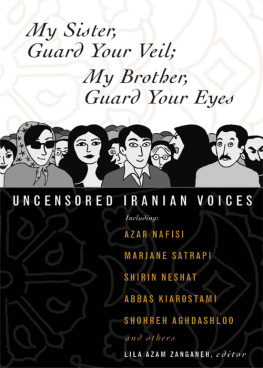Natacha Pavlov - Quicklet on Marjane Satrapis Persepolis: Cliffnotes-like Summary
Here you can read online Natacha Pavlov - Quicklet on Marjane Satrapis Persepolis: Cliffnotes-like Summary full text of the book (entire story) in english for free. Download pdf and epub, get meaning, cover and reviews about this ebook. year: 2012, publisher: Hyperink, genre: Art. Description of the work, (preface) as well as reviews are available. Best literature library LitArk.com created for fans of good reading and offers a wide selection of genres:
Romance novel
Science fiction
Adventure
Detective
Science
History
Home and family
Prose
Art
Politics
Computer
Non-fiction
Religion
Business
Children
Humor
Choose a favorite category and find really read worthwhile books. Enjoy immersion in the world of imagination, feel the emotions of the characters or learn something new for yourself, make an fascinating discovery.
- Book:Quicklet on Marjane Satrapis Persepolis: Cliffnotes-like Summary
- Author:
- Publisher:Hyperink
- Genre:
- Year:2012
- Rating:3 / 5
- Favourites:Add to favourites
- Your mark:
Quicklet on Marjane Satrapis Persepolis: Cliffnotes-like Summary: summary, description and annotation
We offer to read an annotation, description, summary or preface (depends on what the author of the book "Quicklet on Marjane Satrapis Persepolis: Cliffnotes-like Summary" wrote himself). If you haven't found the necessary information about the book — write in the comments, we will try to find it.
ABOUT THE BOOK
Satrapi enjoyed the art of both writing and drawing and felt combining them were better than choosing one or the other. This is how, inspired, Satrapi created a book of black-and-white comic strips about living in Tehran from ages six to 14, (noteablebiographies.com) and then wrote a second volume chronicling her events in Austria from 14 up until her return to Iran at age 18, ending with her college years at 25.Since Persepolis was originally written in French, it was published in France in two volumes in 2000 and 2001, and eventually appeared in the United States in 2003 and 2004. (noteablebiographies.com) In 2007, The Complete Persepolis was published in a single volume, combining Persepolis 1: The Story of a Childhood and Persepolis 2: The Story of a Return. The books can either be purchased as single volumes or as one volume combining both stories.
MEET THE AUTHOR
A current San Francisco Bay Area resident, Natacha Pavlov has been an avid reader and writer since her early years spent growing up in Brussels, Belgium. She earned her B.A. in Comparative World Literature from San Francisco State University and constantly flirts with the notion of earning her Masters/PhD someday. She has French-English non-profit translation experience and looks forward to increasing her writing through various platforms in the near future. Although the list keeps growing, she has interest in reading and writing about classics, mythology (of any/all traditions), horror/gothic fiction, 18th and 19th century French novels, Middle Eastern history and politics (particularly Palestine-Israel) and early Christianity.Fueled by her culturally diverse heritage, her educational and personal interests have led her to engage in extensive travel and to live in places such as Paris, France and Jerusalem, Israel. Amidst all, pens, papers and books have always proven loyal companions. And she wont lie... chocolate has always helped too! She strives to keep exploring the world through books as well as further travel experiences that will ensure continued growth.You can read about some of her experiences in Jerusalem at aneasterinjerusalem.blogspot.com.
EXCERPT FROM THE BOOK
Iranians are very unhappy with the Shahs rule, leading many people to protest. Ever ready to stand up for what was right, Marjane is always pleading to join her parents in political demonstrations, which they refuse due to her young age. However, we find that Satrapi can also have a rebellious side, as proven in the incident in which she has her maid Mehri accompany her to a demonstration on the worst day they couldve gone: Black Friday.Indeed, Marjanes mother slaps them both when they return home, as this was the day when so many people had died in one neighborhood that a rumor spread that it was Israeli soldiers who had attacked them, when indeed it had been their own who attacked. (Persepolis 1, pg. 38-39) Things start to look up when the Shah finally leaves his post, overthrown by the 1979 Islamic Revolution, leading the whole country to rejoice. Marjane meets two political prisoners who are released after the Shahs departure: two Communists named Siamak and Moshen.Buy a copy to keep reading!
Natacha Pavlov: author's other books
Who wrote Quicklet on Marjane Satrapis Persepolis: Cliffnotes-like Summary? Find out the surname, the name of the author of the book and a list of all author's works by series.










